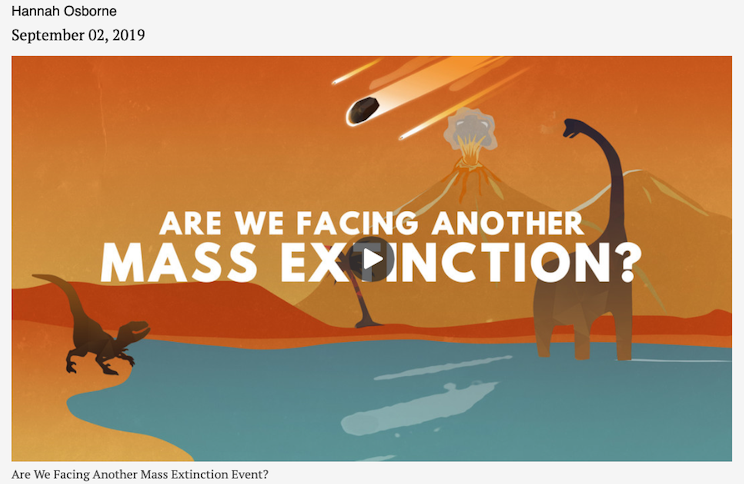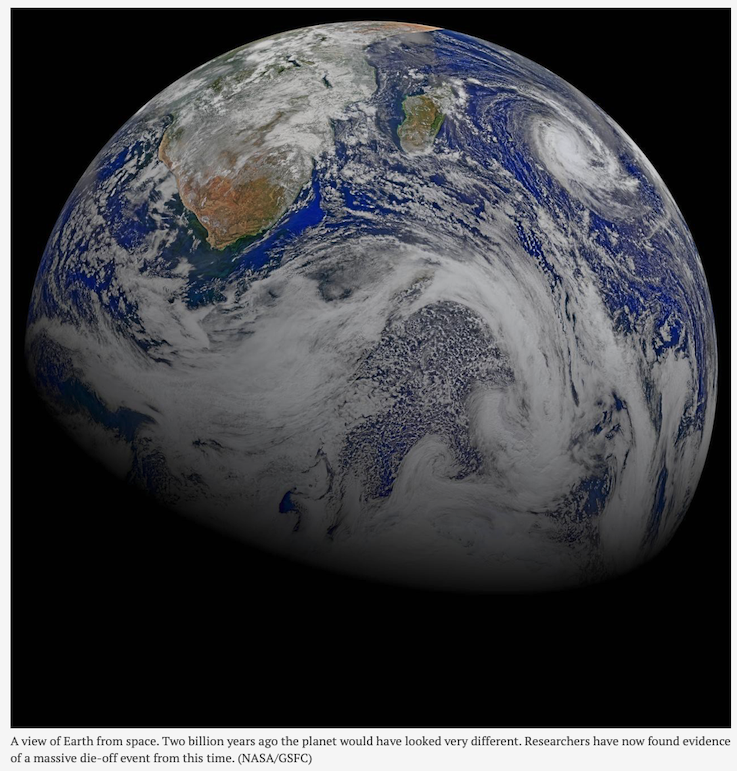
Scientists have discovered a mass die-off that took place two billion years ago—with up to 99.5 percent of life on Earth disappearing. The massive die-off saw more of the planet’s biosphere vanish than when the dinosaurs were wiped off the face of the planet 65 million years ago, researchers say.
Normally, massive die-off events can be tracked through the fossil record—animals exist, then they do not. However, in times before complex life existed, understanding these events becomes more difficult—the microorganisms that made up the planet’s biota cannot be traced in the same way.
In a study published in PNAS, an international team of scientists examined rocks from Hudson Bay, Canada, that would have formed billions of years ago. They were looking at barite, a mineral that holds information about how much oxygen was in the atmosphere at a given time.
From these rocks, the team was able to show that there was a massive drop in the level of life on Earth 2.05 billion years ago. This coincided with major changes to the oxygen levels on the planet—prior to the die-off, about 2.4 billion years ago, there was a massive surge in the amount of oxygen in the atmosphere. At the end of this event—which is known as the Great Oxidation Event—oxygen levels fell dramatically. Researchers say conditions for life on Earth went from “feast to famine”—and that these conditions persisted for about one billion years.
“We were very surprised,” study author Peter Crockford, from Israel’s Weizmann Institute of Science and Princeton University, told Newsweek. “We didn’t expect to see such a large signal, nor did we expect to find it in this specific type of sample.
“Over the 100 to 200 million years before this die-off event there was a large amount of life on the planet, but after this event a huge portion died off. However, instead of recovering like more recent mass extinctions, the amount of life on the planet or size of the biosphere stayed small for the following billion years of Earth’s history—about two billion to one billion years ago.”
He continued: “From our estimates it could be anywhere between about 99.5 percent to 80 percent of life on the planet died off around two billion years ago.” To put that in perspective, the mass extinction event of the dinosaurs saw about three-quarters of life on Earth disappear, while the Great Dying event—the biggest known mass extinction—resulted in the loss of around 70 percent of terrestrial life and 96 percent of ocean dwellers.
The findings, the team say, provides support for the idea of an “oxygen overshoot”—a theory that says photosynthesis and weathering produced a massive amount of oxygen that spurred the development of life on Earth. However, the oxygen-emitting organisms on Earth were then so abundant they exhausted their nutrient supply and numbers fell.

Crockford said their discovery could give an insight into how Earth will change in the future: “Just like two billion years ago, the biosphere today (including us) relies on the base of the food chain. Today, that is microorganisms in the ocean and plants on land. Although oxygen levels will likely never change at a pace fast enough to a level significant enough for humans to take much notice, they could absolutely change over the next billion years.”
He also said he believes there are probably far more major die-off events and mass extinctions that we do not yet know about. “The problem is that the geologic record gets poorer and poorer the further back we look, so we need to combine lots of different tools and intensely interrogate the samples that we have available to translate the rock record into a picture of what the Earth used to look like.”
